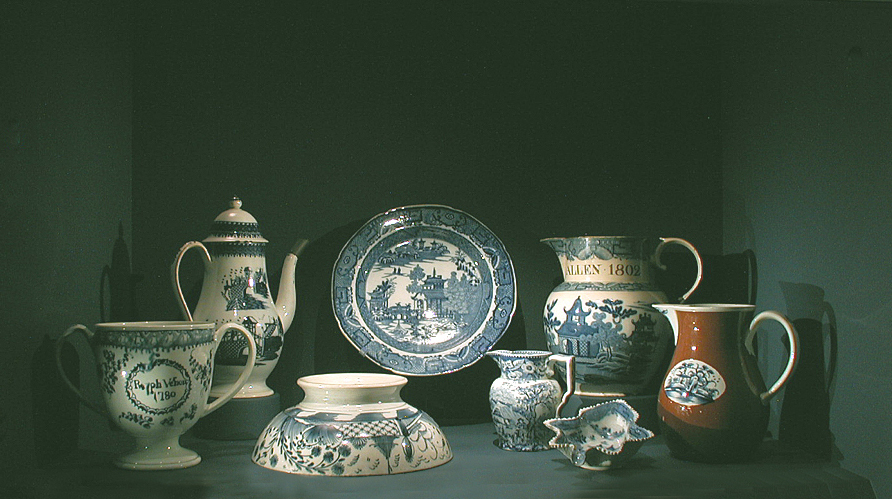
From the moment a finer
ware than the Cream-colour is shown at our Rooms, the sale of the latter will
in a great measure be over there.
Josiah Wedgwood to his partner Thomas Bentley, December 31, 1775
Although Wedgwood would continue experimenting with a whiter ware, his competitors
were more aggressive, and by 1780 a new product known today as pearlware was
in production under the generic name “china glaze.” It came as close
to being porcelain as one could get without being translucent; in addition
to being difficult to achieve, translucency was the exclusive province of
those entrepreneurs who held the patents for the manufacture of porcelain.
Arguably the earliest dated example of pearlware is the 1780 loving cup shown
here (1). Among other dated pearlware in the Noël Hume Collection is
an ale jug (6) made to wet the whistles of potential voters in favor of Messrs.
Pocock and Allen who in 1802 ran for re-election to Parliament for Bridgewater,
Somerset. Thanks no doubt to the beer-befuddled electorate, Pocock and Allen
won.
Brown-slipped Chinese porcelain known as Batavia Ware was a popular import
in the mid-eighteenth century. Pearlware potters tried to copy its appearance
but without conspicuous success (7). The last example (8), made around 1845,
serves as a reminder that pearlware would outlast creamware as a base for
transfer-printed decoration well into the nineteenth century.
1.
Loving cup, pearlware. Marked Ralph Vernon, 1780. Staffordshire, 1780. Lent
by the Chipstone Foundation, NH2000.38, gift of Carol and Ivor Noël Hume.
2.
Fruit bowl, pearlware. Staffordshire, ca. 1785–1805.
3.
Coffee pot, pearlware. Staffordshire, ca. 1795–1820.
4.
Dinner plate, “Willow Pattern” pearlware. Marked Dillwyn & Co.
Swansea, ca. 1811–1818.
6.
Jug, pearlware. Made for James Pocock and Jeffreys Allen. Probably Swansea,
dated 1802.
7.
Pitcher, “Batavia” style pearlware. ca. 1780–1790.
8.
Milk pitcher, pearlware. Staffordshire, ca. 1840–1850.
5.
Dish, pearlware. Staffordshire, ca. 1790.

